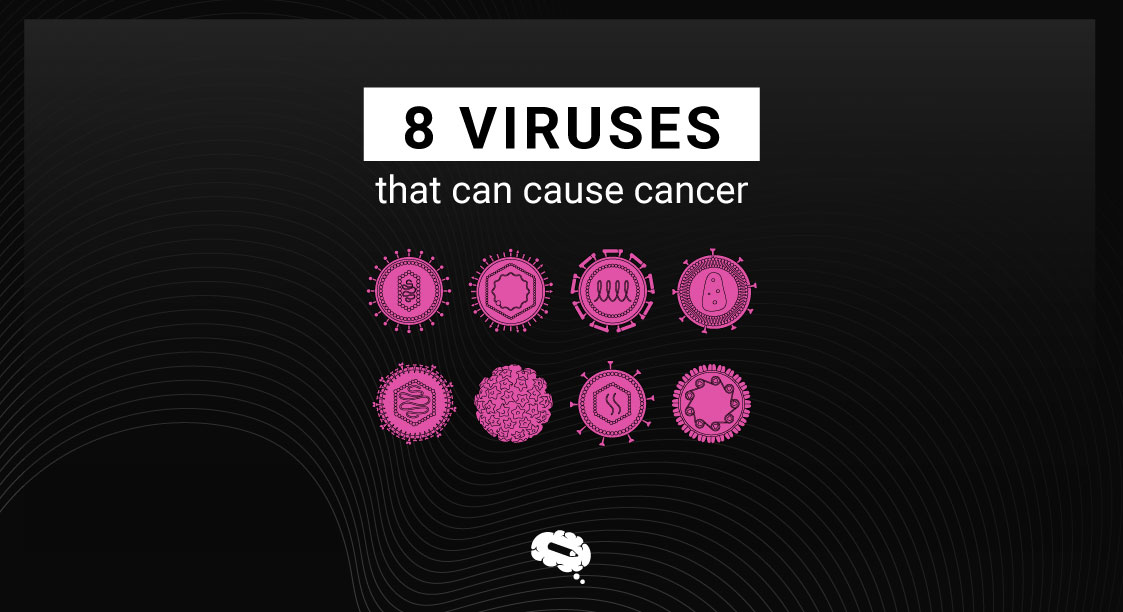Cancer is a disorder in which some cells in the body grow uncontrollably and spread to other parts of the body. It is a prominent cause of mortality globally, accounting for roughly 10 million fatalities in 2020, or nearly one in six deaths.
Did you know that there are presently eight viruses that can cause cancer? Viruses are considered to be responsible for 10% of cancer cases globally.
This Mind The Graph article will walk you through the eight cancer-causing viruses and how to avoid them.
What Is The Mechanism Through Which Viruses Cause Cancer?
Viruses are composed of a limited set of genes in the form of DNA or RNA covered by a protein coat. A virus needs to penetrate a live cell and take control of the cell’s mechanism in order to proliferate and manufacture additional viruses. Some viruses accomplish this by injecting their own DNA (or RNA) into the host cells. Once the DNA or RNA alters the genes of the host cell, it might cause the cell to become cancerous.
What Are The Viruses That Can Cause Cancer?
Epstein-Barr virus
The EBV virus is a kind of herpes virus, widely known as mononucleosis (“mono”) or the “kissing disease”. It is transmitted by saliva or bodily fluids, most commonly through coughing, sneezing, sharing beverages and utensils, touching things with saliva and then touching the mouth, and, of course, kissing. Most people become infected at some time during their lives and people with EBV are usually healthy and do not exhibit any symptoms.
Burkitt’s lymphoma, nasopharyngeal carcinoma (cancer of the upper throat), Hodgkin’s and non-Hodgkin’s lymphoma, t-cell lymphomas, post-transplant lymphoproliferative (too many white blood cells), and leiomyosarcoma (cancer in the soft tissue) are all connected to EBV.
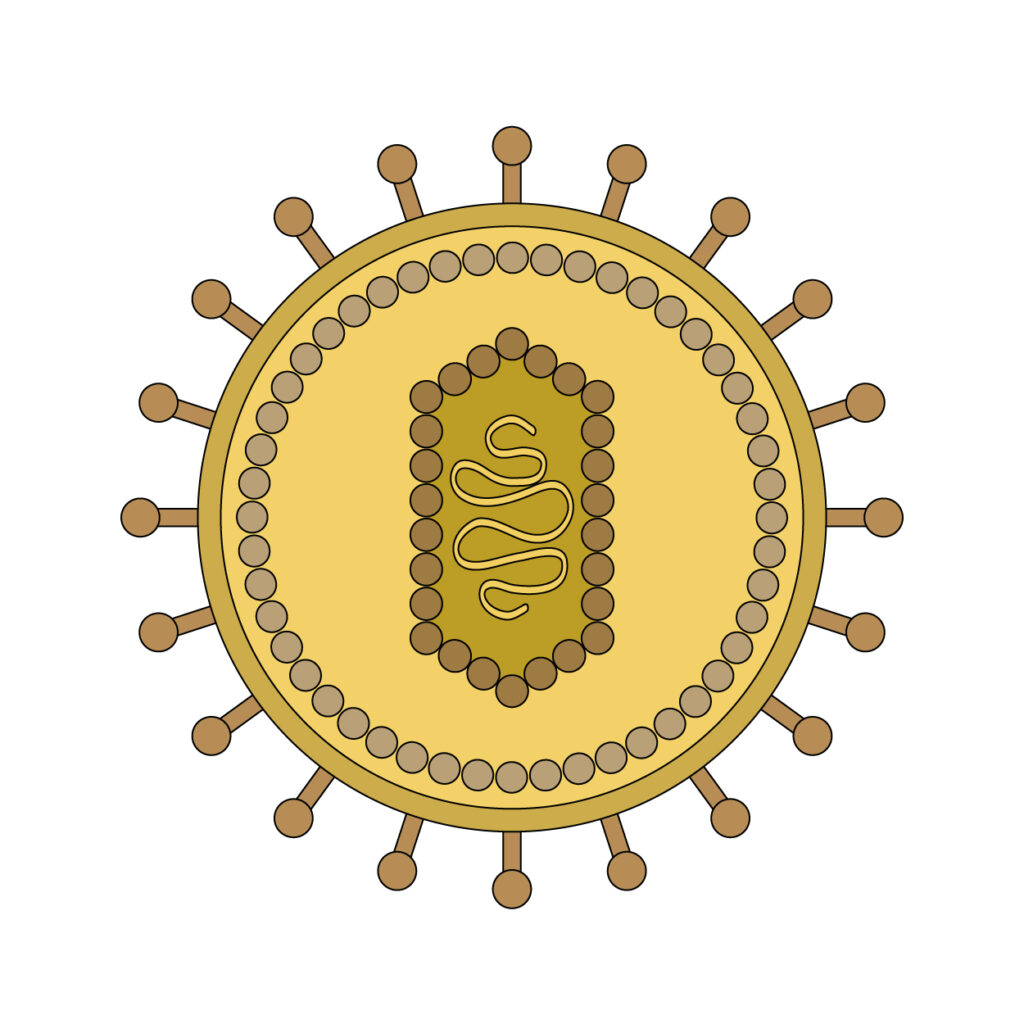
Hepatitis B (HBV)
HBV has the possibility of integrating into the human genome and multiplying inside liver cells, enhancing carcinogenic activity directly through numerous signaling pathways in the liver. HBV infections are exceedingly contagious and transferred through contact with contaminated blood, sweat, or tears. It can also be transmitted by IV sharing, sexual contact, and mother-to-child transmission.
HBV can induce a liver infection, which can progress to liver cancer.

Hepatitis C (HCV)
HCV is less likely than HBV to cause symptoms and cannot be incorporated into the human genome. The progression is multifactorial and thus can take 20-40 years, which is why people with HCV may be unconscious if they have the disease. Because the immune system attacks the virus over time, HCV is more likely to induce chronic infection, creating liver fibrosis, which can progress to cirrhosis and HCC.
Transmission, similarly to HBV, happens by contact with contaminated blood, sweat, or tears. It can also be transmitted by IV sharing, sexual contact, and mother-to-child transmission.
Hepatitis C is a leading cause of liver cancer and can also result in non-Hodgkin’s lymphoma.

HIV (Human Immunodeficiency Virus)
HIV is a retrovirus that can cause acquired immunodeficiency syndrome, a chronic, sometimes fatal illness (AIDS). HIV infects and kills helper T cells. As the number of T cells diminishes, the immune system has a lot of difficulty battling infections. HIV infection also stimulates the growth of specific B cells, raising the risk of oversupply and mutations.
HIV is spread by bodily fluids including blood, sperm, and vaginal fluids. It can also be passed on from an HIV-positive mother to her child. There is no cure for HIV, yet it may be managed with medication.
Certain forms of lymphomas, such as non-Hodgkin lymphoma, Hodgkin lymphoma, primary CNS lymphoma, leukemia, and myeloma, can be increased by HIV infection. HIV also raises the chance of Kaposi’s sarcoma, cervical cancer, and cancers of the anus, liver, mouth and throat, and lungs, in addition to lymphomas.
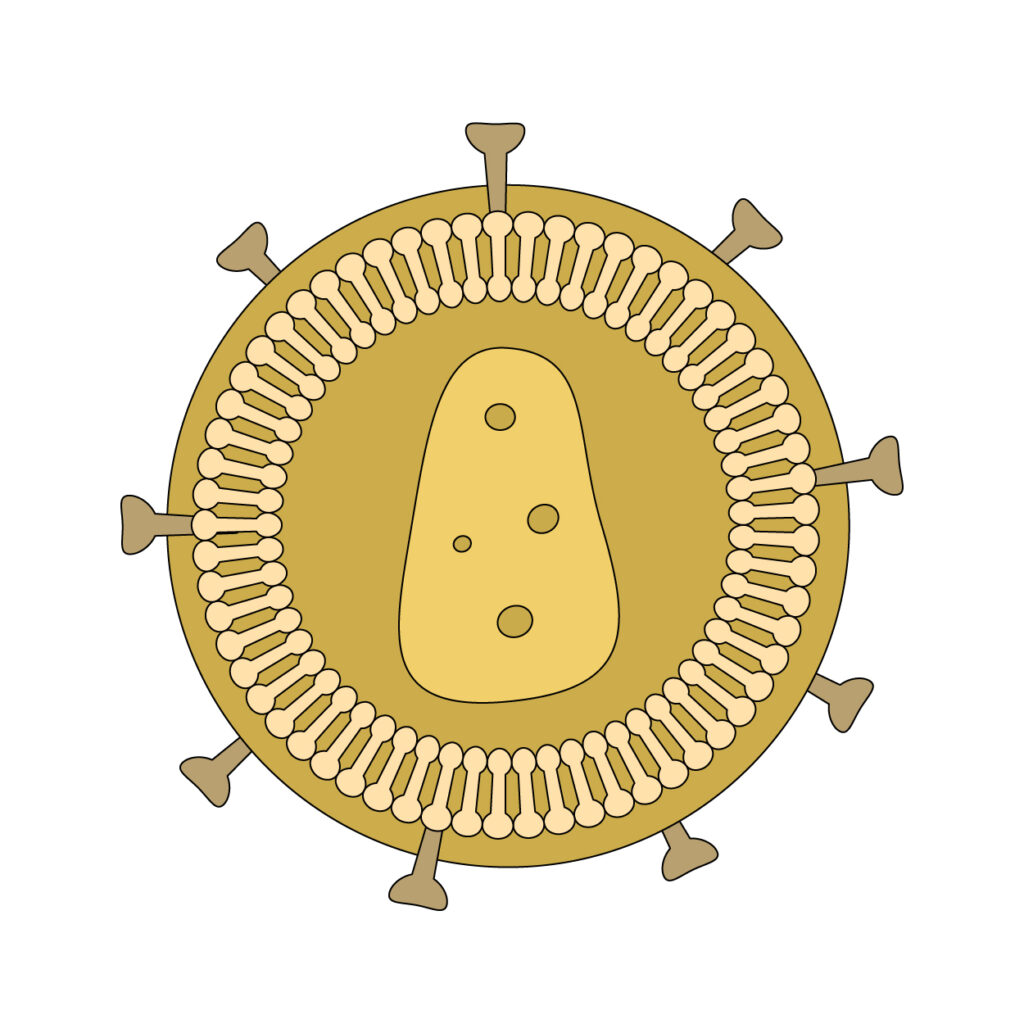
Human Herpesvirus 8
The human herpesvirus-8 (HHV-8) virus, also known as Kaposi sarcoma-associated herpesvirus, is a member of the Herpesviridae family of DNA viruses. KS is an uncommon, slow-growing cancer that often manifests as reddish-purple or blue-brown tumors just beneath the skin. HHV-8 infects the cells that line blood and lymph arteries in KS. They divide excessively as a result of the infection and live for much longer than they should. These alterations may potentially transform them into cancer cells.
HHV-8 is mostly transmitted through sexual contact and saliva. Transfusions of organs and blood may potentially result in transmission.
It is responsible for Kaposi sarcoma, a kind of cancer that impacts the skin and soft tissues.

Human Papillomavirus
Human papillomavirus (HPV) is the most widely prevalent sexually transmitted virus; it is spread by skin-to-skin contact, with sexual contact being the most common transmission. When the HPV genome integrates into human chromosomes, it disrupts an open-reading frame and induces the overexpression of two viral oncogenes, which can lead to cancer.
There are 14 high-risk HPV strains that can cause cancer in both men and women. These cancers include anal, cervical, penile, throat, vaginal and vulvar, and head and neck cancers. Over 70% of cervical cancer occurrences are estimated to be caused by two high-risk strains, 16 and 18.
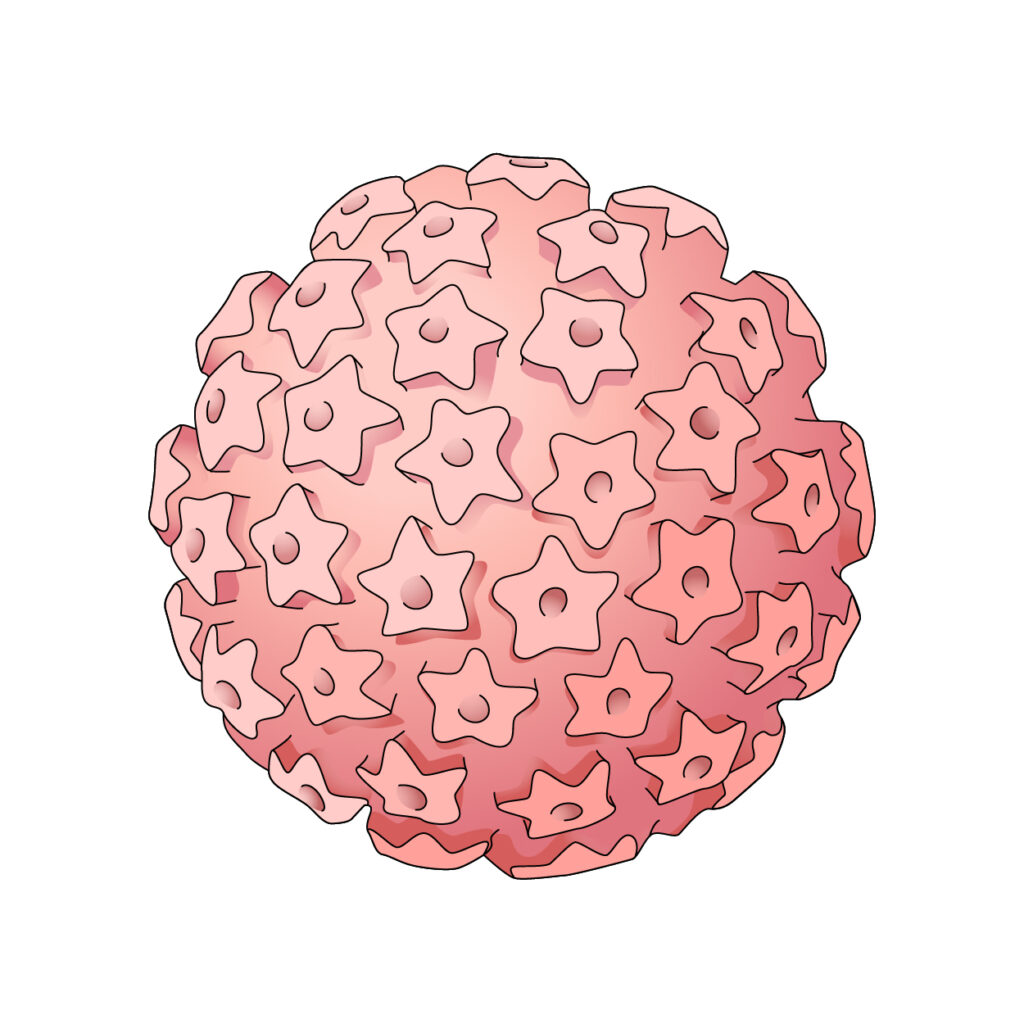
Human T-Cell Leukemia Virus Type
HTLV-1 is a retrovirus, which is a kind of virus. For their genetic code, these viruses use RNA rather than DNA. They must undertake an extra stage to transform their RNA genes into DNA in order to replicate. Some of the extra DNA genes may eventually be incorporated into the chromosomes of the virus-infected human cell. This can cause changes in how cells develop and divide, potentially leading to cancer.
Like HIV, it spreads by bodily fluids such as blood, sperm, and vaginal fluids. It can also be passed on to a child by an HIV-positive mother, however, this risk is minimized if the mother does not breastfeed.
HTLV-1 has been associated with lymphocytic leukemia and non-Hodgkin lymphoma.
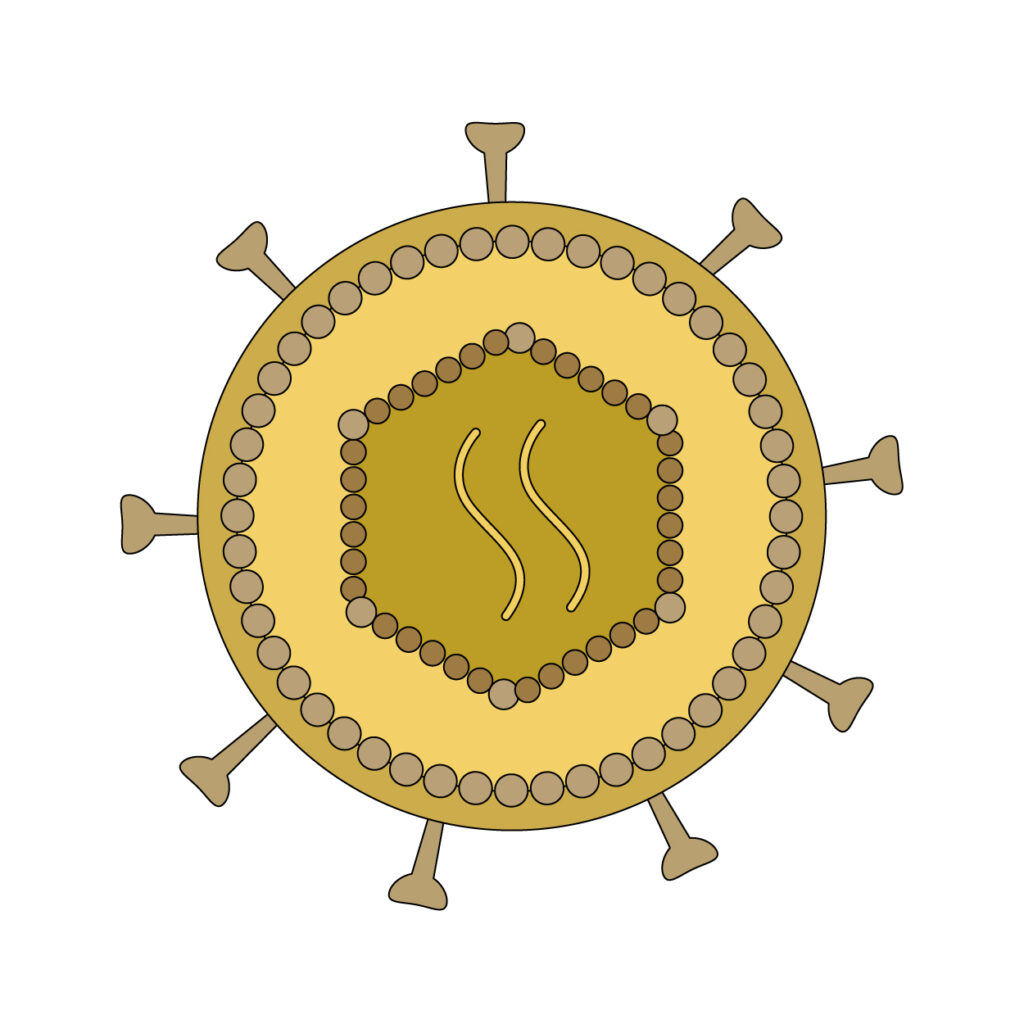
Merkel Cell Polyomavirus
MCV was identified in samples from a rare and severe form of skin cancer known as Merkel cell carcinoma. MCV infects the vast majority of people at some time in their lives (mostly in childhood), and it typically causes no symptoms. In rare cases of viral infection, however, the virus can modify the DNA inside cells, resulting in Merkel cell cancer, and is currently recognized to be the cause of almost all Merkel cell cancers.
Although it is uncertain how people become infected with this virus, it has been found in a number of areas throughout the body, including skin and saliva.

How To Avoid Getting Cancer-Causing Viruses?
- Vaccine – The HPV vaccination has the potential to lessen the risk of HPV-related cancer and the hepatitis B vaccine can significantly curb your liver cancer risk.
- Use protection – This helps avoid sexually transmitted viruses including HPV, HIV, and hepatitis B and C.
- Avoid fluid sharing – Do not use illegal drugs or share syringes, needles, or other contaminated equipment or personal objects that may contain blood. Because certain viruses may be spread by saliva, avoid sharing utensils, beverages, and touching your mouth before washing your hands.
If you are at risk, get screened – Some cancer-related viruses, such as HPV, HIV, and hepatitis B and C, are screenable. Detecting it at an early stage, when it’s more treatable.
The World’s Largest Scientifically-Accurate Illustrations Gallery
Learn about Mind the Graph, a large gallery of scientifically accurate illustrations with wonderful templates for you to utilize to communicate and distribute your work. Mind The Graph makes it simple to find the perfect infographic or illustration to go with your work. And, if you can’t find the template you envisioned for it, we’ll create it for you!

Subscribe to our newsletter
Exclusive high quality content about effective visual
communication in science.

